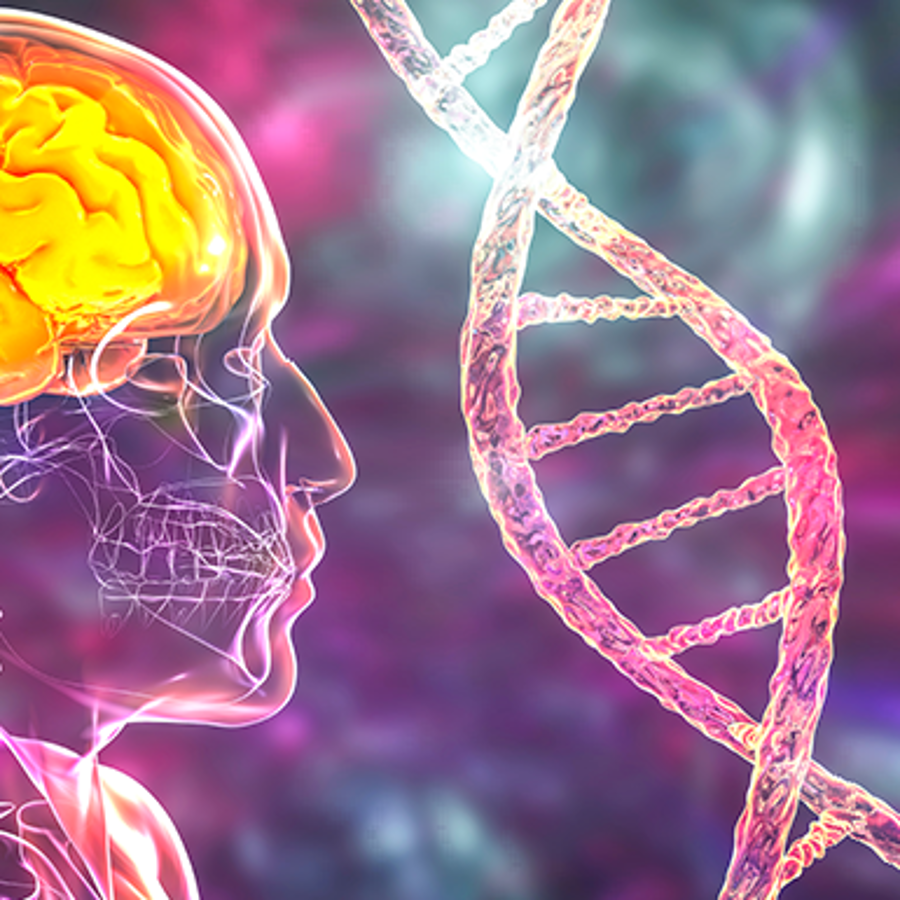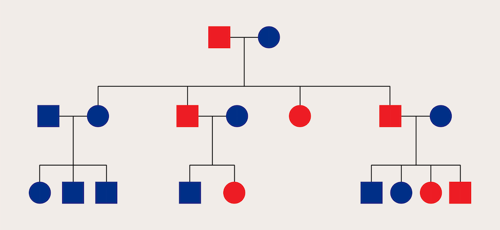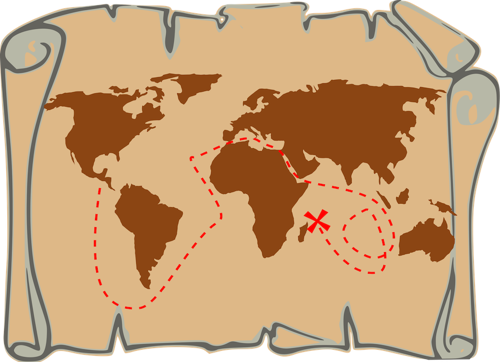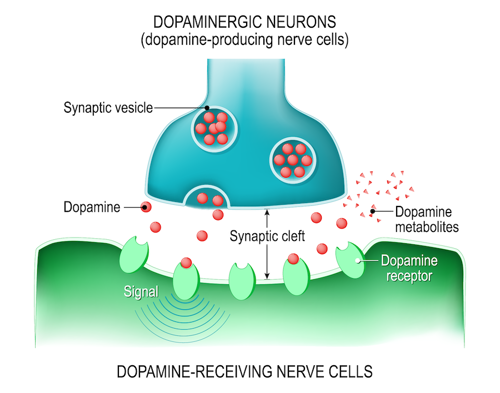
What is known in regards to DNA about Tourette syndrome?
September 14, 2007

- Related Topics:
- Complex traits,
- Neurodiversity
A curious adult from Canada asks:
"I’m curious what is known in regards to DNA about Tourette syndrome. Is it known if this gene is recessive or dominant?"
People with Tourette syndrome (TS) definitely have changes in DNA that contribute to them having TS. But scientists still haven't pinpointed where these changes are and the gene(s) they affect.
As you can tell from the (s), it turns out there's probably more than one gene involved. When a disease is caused by differences in more than one gene, it's not usually passed down in a simple dominant or recessive way. So TS isn't a dominant or recessive trait.
The fact that more than one gene is involved in TS complicates finding the genes involved. Add to this the fact that the environment can play a role too and it is no wonder scientists are having so much trouble finding TS genes. And predicting who might end up with TS.
Changes in the Brain
People with TS suffer from tics, which are body movements or sounds they can't control. The disease affects between 1 and 10 of every 1000 people, in all ethnic groups.
As you might expect, TS happens when something in the brain isn't working quite right. Brain imaging studies suggest that people with TS have altered activity in their basal ganglia. This makes sense since this part of the brain helps control movement.
This altered activity is probably due to changes in neurotransmitters. These are special chemicals that brain cells use to talk to each other. When brain cells have trouble talking to each other, the things they control don't work right. This is why people with TS have problems with movement and speech.
OK, but can TS really be a genetic disease? Absolutely.
Each neurotransmitter is made from the instructions found in a particular gene. And other genes have the instructions for making the "ears" of the brain cells that listen to the neurotransmitters. These "ears" are called receptors. And there are many of them on brain cells.
Someone with a broken version of a neurotransmitter or receptor gene might not be able to use neurotransmitters properly. That person would be more likely to have TS.
So there's plenty of DNA that could be responsible for TS. But how do we figure out if TS is actually a genetic disease? And how do we find the genes involved if it is?

Finding Genetic Targets for Diseases
Scientists start by finding a person with the disease and then looking at his or her family. You share more genes with your family than you do with someone on the street. So if a disease is caused by a broken gene, then the disease will probably run in families. (Click here to learn why family studies aren't as simple as they seem.)
And that's exactly what scientists did with TS. They found that people with TS often had a family member with the disease. For example, in one study each family member of someone with TS had a 10-15% chance of having TS too.
The next step is to study family histories using special charts called pedigrees to look for patterns. Does the disease skip generations? Is it more common in men than women? Do around half the kids of a parent with the disease get the disease, too?
At first the researchers thought they saw a pattern. It looked like if one parent had TS, then around half the kids did, too. This is a signature for a dominant gene.
But this didn't hold up. As scientists looked at more families, the pattern disappeared.
Next, scientists tried comparing DNA from TS family members with DNA from healthy family members to figure out which gene(s) are broken in people with Tourette. This traditional way of finding a disease gene is called genetic mapping. It's actually kind of like a treasure hunt.
Let's say you're studying a family. Some family members have TS and some don't. You want to find a piece of DNA (the broken gene) that's shared by all the TS members of the family but none of the healthy members. This is the "treasure" we're looking for.
DNA is too small for us to see the X that marks the spot. Instead, scientists use special landmarks called markers.
Markers are just pieces of DNA that scientists can easily "see." Some markers can make a cell do something different so the scientist knows it is there. Others can be seen using special chemicals.
Like searching for buried treasure, mapping a disease gene is a process of zooming in on the right spot. You have one clue (a genetic marker) that brings you near the treasure. This leads you to other markers that bring you even closer.
Using these techniques, scientists have identified half a dozen chunks of DNA that might be involved in TS. The hard part now is finding which ones are really responsible for TS. This is tricky for a bunch of reasons.

A Combination of Genetic and Environmental Factors Cause TS
First, scientists think that TS may be caused by changes in many genes. And not everyone with TS will have the exact same set of altered genes. This means you have to look at lots of families to separate out what is important and what isn't.
And lots of genes means you'll have to use lots of genetic markers instead of just one. It's as if your buried treasure were divided up and buried in many different places. It would be much harder to find all those small treasures than one big buried treasure.
Second, the environment definitely plays a role too. For example, we know identical twins can have different sorts of tics -- the twin who weighs less at birth usually has more severe tics. Since identical twins have identical genes, DNA can't explain this difference. So something about the environment during pregnancy may play a role.
Also, TS is 3 or 4 times more common in boys than in girls. Scientists think that hormones like testosterone -- which is much higher in boys -- may increase the severity of the disease.
All together, this means that some people have TS genes but don't have TS. Maybe they are female and have the genes but don't have enough testosterone to trigger TS. Or maybe they weren't exposed to something in the environment that contributes to TS.
These cases can make things pretty confusing! It's like a second false map that leads us away from the treasure. Or finding hundreds of X's that mark the spot.

So how can you possibly find the gene in all of this confusion?
There are a couple of different ways scientists can try to home in on the right treasure. One method is called a candidate gene approach. Here, scientists predict which genes might be involved, and then look for differences in those genes.
This method has worked for TS, at least in part. Remember, people with TS have trouble controlling their movements. So scientists searched for mistakes in genes that code for dopamine, a neurotransmitter that's important for body movement. And they found that many people with TS have mistakes in their dopamine genes.
Another way to find disease genes is called cytogenetics. This method uses markers that a scientist can see under the microscope. These big changes are usually ones that affect whole chromosomes.
Last year, geneticists at Yale University found a boy with TS who had an inversion in chromosome 13. Part of his chromosome had been cut out and then pasted back in backwards.
Scientists found three genes that were affected by this chromosome mistake. One of the genes -- called SLITRK1 -- is important in the development of brain cells.
It turns out that the SLITRK1 gene was broken in three other people with TS. Because it only accounts for a few cases of the disease, it's definitely not the whole story. But it does give geneticists an important clue to the types of genes that may underlie TS.
We definitely have a long way to go before we fully understand what causes TS. But it's a wonderful example of a genetic treasure hunt. And it reminds us that genes and environment are both important in making us who we are.

Author: Ruth Tennen
When this answer was published in 2007, Ruth was a Ph.D. candidate in the Department of Cancer Biology, studying telomerase regulation in cancer and stem cells in Steve Artandi's laboratory. Ruth wrote this answer while participating in the Stanford at The Tech program.
 Skip Navigation
Skip Navigation
